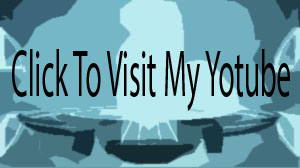Tag Archives: Definitions
Knowledge.
Grace out does Karma and jumps over Karma’s boundaries.
Psalm 3 New International Version (NIV)
Psalm 3[a]
A psalm of David. When he fled from his son Absalom.
1 Lord, how many are my foes!
How many rise up against me!
2 Many are saying of me,
“God will not deliver him.”[b]
3 But you, Lord, are a shield around me,
my glory, the One who lifts my head high.
4 I call out to the Lord,
and he answers me from his holy mountain.
5 I lie down and sleep;
I wake again, because the Lord sustains me.
6 I will not fear though tens of thousands
assail me on every side.
7 Arise, Lord!
Deliver me, my God!
Strike all my enemies on the jaw;
break the teeth of the wicked.
8 From the Lord comes deliverance.
May your blessing be on your people.Footnotes:
[a] Psalm 3:1 In Hebrew texts 3:1-8 is numbered 3:2-9.
[b] Psalm 3:2 The Hebrew has Selah (a word of uncertain meaning) here and at the end of verses 4 and 8.
The Good -O- Meter ; )
A Maybe Useful Wiki…
Thoughts 2
One of the toughest challenges of mankind is the ability to differentiate and evaluate priorities, obligations, what decision to make next, and which decisions will effect you in which possible ways, not to mention the countless alternatives to how your life might turn out because of one small decision or moment of indecisiveness…
Thoughts
Sometimes Life may seem like a competition for opportunity, but I’m sure it shouldn’t.
Socks and Sandals
My Youtube guys : D
Web Design Terminology
Blog – Almost like a diary or journal, with frequent updates, deal with a specific topic and are often used as a marketing or customer service tool, short for web log, a blog is a web page
HTML -allows the web developer to add functionality,language used to construct web pages
CSS -determines the look of elements on a web page, CSS gives the web designer more power to control how the content is displayed, it splits the content from the presentation
Content Management System -offers a way for a user to edit the content of a web site from within a browser-based interface, without any HTML skills required, is a feature often built into a web site by the developer, allowing the web site owner to add, remove or change the content themselves
JavaScript -is a client-side scripting language used to create dynamic behaviour in HTML documents, the primary use and benefit is that actions can be performed on the page without the need to reload the page, the major browsers support JavaScript, but the user usually has the option to turn JavaScript off
PHP -is a server-side scripting language. It is used extensively in web development to produce dynamic pages, (recursive acronym for PHP: Hypertext Preprocessor)
WYSIWYG – WYSIWYG is short for “What You See Is What You Get”. A WYSIWYG HTML editor allows the web designer to work on the web site without editing the code directly, The WYSIWYG editor has a user-friendly interface which allows the designer to place images, change attributes etc. without having to write the HTML markup, It is worth noting that most WYSIWYG editors are somewhat limited and that professional designers should have a good command of the language in order to be able to edit the code directly
URL-is a fancy name for a web site address, for example http://www.webdesigndictionary.com/terms.php?letter=u
Domain Name- is a name by which a web site or web server is identified, for example webdesigndictionary.com, domains can include letters, numbers and hyphens only
IP Address-Every computer connected to the Internet has an IP or IP address. IP addresses are numerical, consisting of three blocks e.g. 123.456.7.89
Host-in order for your web site to be visible to the world, it must be “hosted” on a web server,the host is the company that provides the web server, you could set up your own hosting server, but that is costly and time-consuming compared to hosting your web site with a third-party host, See http://www.w3schools.com/hosting/host_intro.asp for a more detailed explanation
User Interface-means by which the user and a computer system interact, in particular the use of input devices and software

